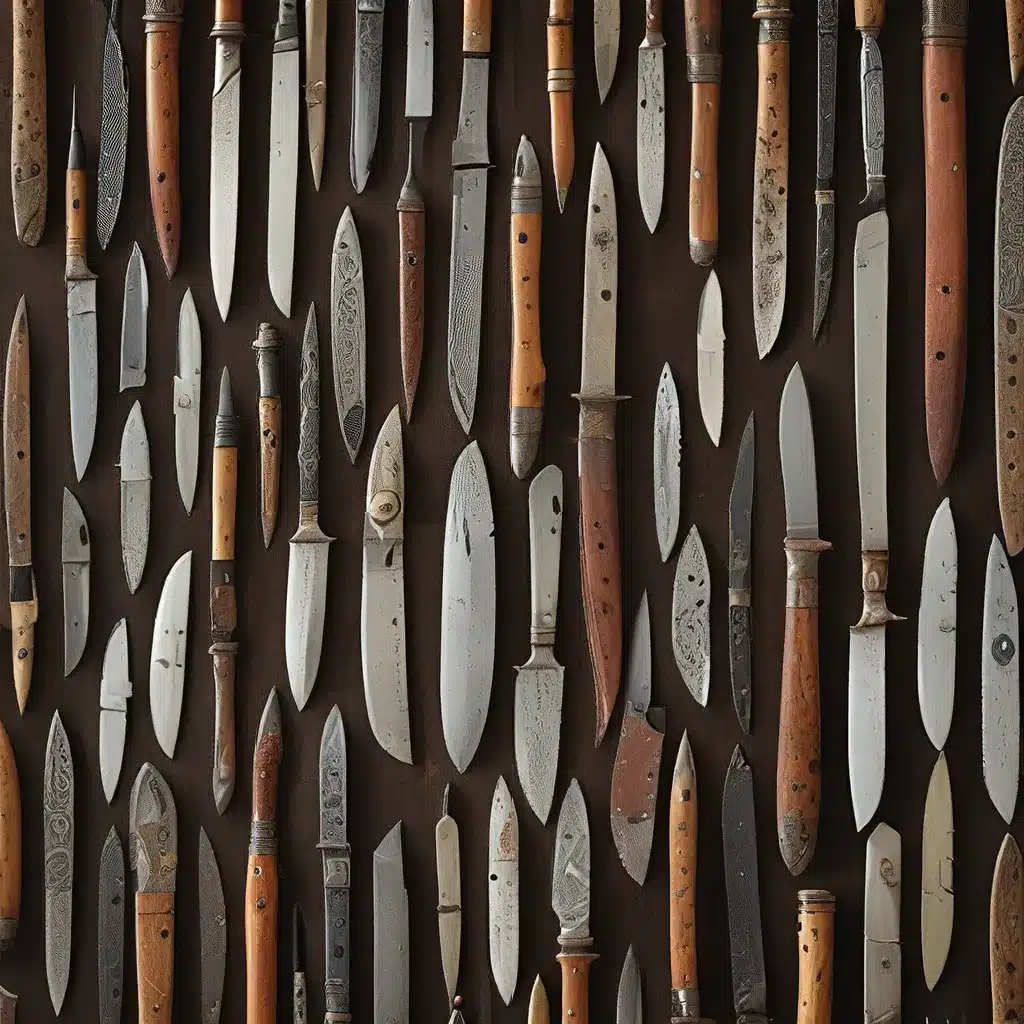
As an avid collector of all things vintage and antique, I’ve long been fascinated by the allure of old-world cutlery. Knives, in particular, have a certain rugged charm that speaks to the passage of time and the stories they’ve witnessed. From the forged steel blades of medieval Europe to the sleek, elegant designs of early 20th-century America, these functional works of art have captured my imagination.
If you share my affinity for the vintage and the vanguard, then you’re in the right place. Today, we’re going to embark on a journey through the world of antique knife collecting, exploring the rich history, the captivating aesthetics, and the practical considerations that make this hobby so rewarding.
Forged in History: The Evolution of Antique Knives
The story of the antique knife begins long before the dawn of recorded history. According to historians, the earliest known precursors to modern blades were likely used by our prehistoric ancestors for tasks like shearing sheep and butchering game. As civilizations evolved, so too did the art of knife-making, with each era leaving its indelible mark on the form and function of these timeless tools.
The first century saw the emergence of the cross-bladed scissors we recognize today, though they wouldn’t become commonplace until the Middle Ages. Throughout this period, knives were primarily hand-forged from iron, with rivets connecting the blades until the introduction of screws in the 1700s.
By the mid-1800s, the industrialization of the cutlery industry had begun to transform the landscape. Sheffield, England, with its abundant iron ore deposits, became a mecca for knife and scissors production, giving rise to countless manufacturers vying for a share of the eager market.
As the 20th century dawned, innovation continued to shape the world of antique knives. Brands like Wiss and Clauss emerged as dominant forces, leveraging new technologies and techniques to push the boundaries of design and craftsmanship. The result? A dazzling array of vintage treasures waiting to be discovered by discerning collectors like ourselves.
Cutting-Edge Aesthetics: The Allure of Antique Knife Design
But let’s not just appreciate antique knives for their historical significance – these artifacts are works of art in their own right. From the intricate etchings and ornamental handles of European blades to the sleek, minimalist profiles of their American counterparts, each knife is a testament to the ingenuity and artistry of its maker.
One of the true joys of collecting antique knives is the sheer variety of styles and influences you’ll encounter. Take, for instance, the hybrid scissors that bear the marks of both Sheffield, England and Solingen, Germany – true embodiments of the global exchange of craftsmanship that shaped the industry.
And then there are the dainty embroidery scissors from Solingen, adorned with delicate stork motifs and floral decorations, a nod to the city’s reputation as the “City of Blades.” Or the quirky, bunny-shaped scissors that seem to have been made for the pure delight of their owners.
Each of these unique pieces carries with it a story – of the skilled artisans who poured their passion into their work, of the cultural influences that permeated the industry, and of the collectors and enthusiasts who have kept these traditions alive.
The Practical Pursuit: Caring for Your Antique Knives
Of course, the beauty of antique knives is not merely skin-deep. These tools were designed to perform, and with the right care and attention, they can continue to serve their intended purpose for generations to come.
One of the key considerations for the antique knife collector is blade condition. Over time, rust and wear can take a toll on the cutting edge, but with a little TLC, you can breathe new life into even the most weathered blade. Gentle cleaning with white vinegar and fine steel wool can often do the trick, restoring the blade’s sharp, gleaming edge.
And let’s not forget the handles – these critical components not only contribute to the overall aesthetic but also provide the ergonomic foundation for comfortable, precise use. Whether your collection features wooden, bone, or metal handles, proper storage and display can go a long way in preserving their condition and character.
Speaking of display, antique knife collectors have countless options when it comes to showcasing their prized possessions. From framed arrangements to upright displays in vintage-inspired vessels, the possibilities are endless. The key is to find a method that not only highlights the beauty of your knives but also protects them from the ravages of time.
Embracing the Unexpected: The Joy of Antique Knife Collecting
As with any hobby, the true allure of antique knife collecting lies in the unexpected discoveries and the personal connections we forge along the way. Whether you’re scouring flea markets and antique shops or inheriting cherished heirlooms, each new find has the potential to open a window into the past and ignite your imagination.
Perhaps you’ll stumble upon a pair of hair-cutting scissors bearing the mark of a German immigrant who brought his craft to the United States, or a set of bookbinding shears that whisper tales of a bygone era of craftsmanship. The thrill of the hunt and the satisfaction of uncovering these hidden gems are what make this pursuit so rewarding.
And let’s not forget the practical applications of your growing collection. As any seasoned sewer, gardener, or DIY enthusiast can attest, a well-maintained antique knife can be an invaluable tool, imbued with a sense of history and purpose that mass-produced models simply can’t match. Imagine the stories you could tell as you carefully trim fabric or prune your prized rose bushes with a blade that’s seen the passage of centuries.
So, if you’re ready to embark on a journey through the captivating world of antique knives, why not start your collection today? With a keen eye, a bit of research, and a healthy dose of curiosity, you just might uncover the next hidden treasure that will become the centerpiece of your collection – and the envy of your fellow collectors.


